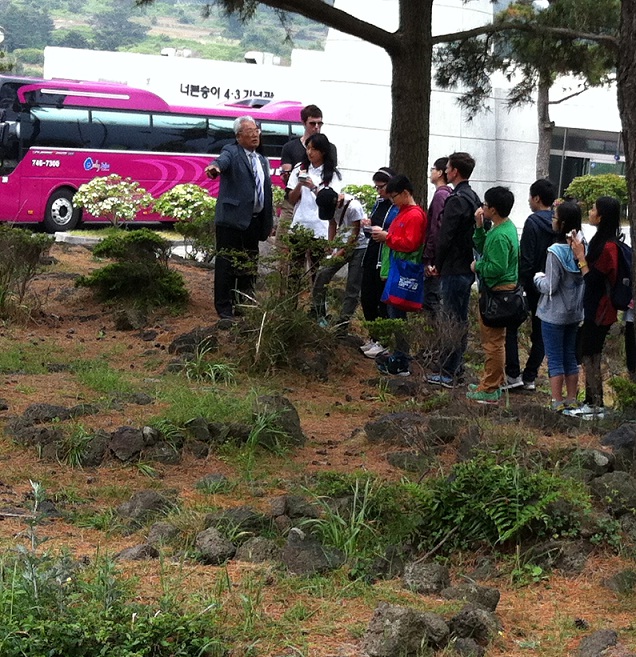- The April 3 story
|
||||||||
|
|
||||||||
Jeju is known for being a place of peace and beauty, but Jeju has injurious past. The 4·3 uprising happened on April 3, 1948, and government retaliation continued until September 21, 1954. After Japan failed, pro-Japanese appeared again by U.S.A government.
At same time, South Korea Lab centrally didn't agreed about South Korea seperate established. (South)Korean Workers’ Party didn’t agree. In the process of incident, lots of Jeju's people killed.
Bukchon Elementary School is the sight of one of the many massacres that occured during this time period. About 400 people were killed by government soldiers. Adject to the modern day school facility lie the graves of children buried without funerals, and were only put to rest after the massacre finished.
The 4.3 uprising hass every evidence in the cast iron Kettle. Around Monument of Literature for novel Aunt Sumi, many tombstones are sprawled. It represents the dead bodies of those who were killed during the 4·3 massacre.
The novel Aunt Sumi by Gi Young Hyeon and the recent film Jiseul have introduced the public writ large to the 4.3 uprising and resulting massacre. The novel was initially censored by the government, but was eventually published. Jiseul, a film that gained notariaty at the Sundance Film Festival focuses on one small group’s struggles during the 4·3 massacre. The actors in the movie all spoke in the traditional dialect of the Jeju people.
Lee Jae hu, a chairman of Bukchon village 4.3 Bereaved Family Association explained, “ If I had to sum up the 4·3 into one sentences, I want to claim that Jeju 4·3 was actually a resistance movement for Korean Unification.”
Bu Gyu won contributor@jejuweekly.com







